- Home
- Tom Clancy
Every Man a Tiger: The Gulf War Air Campaign sic-2
Every Man a Tiger: The Gulf War Air Campaign sic-2 Read online
Every Man a Tiger: The Gulf War Air Campaign
( Study in Command - 2 )
Tom Clancy
Chuck Horner
General Chuck Horner was the right man in the right place at the right time. Combining a broad experience of all aspects of aerial warfare with a deep respect for and knowledge of Arab culture, Horner commanded the U.S. and allied air assets during Desert Shield and Desert Storm — the forces of a dozen nations — and was responsible for the design and execution of one of the most devastating air campaign in history. Never before has the Gulf air war and its planning, a process filled with controversy and stormy personalities, been revealed in such rich, provocative detail. Beyond that, however, Air Command is the story of two revolutions: of how a service damaged by Vietnam reinvented itself through vision, determination, and brutally hard work — in Horner's words, "We had to learn how to be an Air Force all over again" — and of how war changed fundamentally in the last decade of this century, not only in the new dominance of air power but in all aspects. It is a story of speed, accuracy, efficiency, decentralization, information, and initiative, as well as smoke, fear, courage, and blood. It is a front-row seat to a man, an institution, a war, and a way of war that together make this an instant classic of military history.
Tom Clancy, Chuck Horner
Every Man a Tiger: The Gulf War Air Campaign
DEDICATION
Normally, a book like this would be dedicated to those who paid the ultimate price in the desert; but here a different view is in order. Those of us who deployed were proud to be there; it was an honor to be allowed to participate in the effort to free Kuwait. At the same time, we felt gratitude for the troops who didn’t deploy and were supporting us with spare parts and doing the other things that needed to be done back home or at their bases overseas. We were also extremely grateful to the reservists who were activated to man our home bases — guarding the gate, or working in the hospitals, or taking care of our families. Most of all, we felt a deep sense of gratitude to the people who supported us so vigorously with mail, cookies, and encouragement. They didn’t fully understand why we were in the desert; they sure were concerned about a war and its attendant casualties; but they gave us their love and prayers without reservations.
INTRODUCTION
Ionce observed that fighter pilots are little boys who never really get past the stage of buzzing past little girls on their bikes. I still believe this to be true. But then how does one deal with a general of fighter pilots? All the more so, how does one deal with a professional warrior who has the most elegant and subtle intellectual disguise this side of Jeff Daniels in Dumb and Dumber?
Well, okay, you need a few things right off. To fly an F-16 fighter plane, you have to have the skills of a concert pianist — in fact, you need to know how to play two pianos at once, since all the buttons you use to fight the airplane (that’s why it’s called a fighter) and all the buttons that work the radar, guns, and missiles are located on the stick and throttle quadrant so that you can kill people without having to look down. So, there you are, flying an aircraft that looks and evidently acts like a Chevy Corvette (but in three dimensions), head up, eyes out of the cockpit, looking for some Bad Guy to give a Slammer (AIM-120 AMRAAM missile) to… Well, just flying the damned airplane isn’t all that easy — which is why, as anyone can tell you, one of the differences between a fighter pilot and an ape is that it doesn’t cost $1,000,000 to train an ape.
There are numerous other such differences between fighter pilots and apes, of course — you can, for example, trust your wife around an ape…
Anyway, where were we? Oh, yeah. There you are, at 20,000 feet with a highly expensive fighter plane strapped to your back, flying it with the sort of skill the average guy with perfect eyesight, the reflexes of a mongoose, and the killer instinct of Jack Dempsey after a few hard drinks can develop in, oh, ten or twenty years of practice. Right hand is on the stick, identifying the various weapons-control buttons by feeling with your fingertips, while your left hand is doing the same on the throttle quadrant. There are other people out there who want to kill you. Some in their own airplanes, others on the ground with surface-to-air missiles, which are like fighter planes, but dumber, though somewhat faster, and still others with various firearms ranging from the ubiquitous AK-47 7.62mm (.30 caliber) to 100 millimeter (four-inch, and these bullets explode when they hit or get close to you), because, amazingly enough, not everyone likes fighter pilots.
But, getting back to business, this fighter jock is a general officer. He isn’t merely supposed to mount his gallant steed and tilt off against a willing foe on the field of honor. He’s supposed to lead, and command others like himself, because all of this fighting stuff is supposed to make sense, because you’re not merely a well-paid and highly trained ape-substitute. You are, in fact, supposed to make a plan on how to use all those three-dimensional Corvettes that carry bombs and missiles with the purpose of enforcing your country’s will on somebody who might not quite see things our way.
A fighter pilot is, when you get down to it, a warrior, a person who puts himself in harm’s way, and does it all by himself. Such people are both the same as, and different from, other warriors. The differences are mainly technical. The fighter jock drives something sleek, neat, and expensive, and loves driving it (as the wife of a naval aviator once wrote: “I’m his mistress — he’s married to the airplane”) because it’s what sets him apart. That’s what makes him bigger than other men, and this is something the fighter jock never forgets. And so, in the tradition of armored knights of medieval times, there he is, up there for everyone to see, proud and alone, doing his job for his country.
They don’t have to look like killers. We so often think all professional soldiers should look like John Wayne. A good and serious man, the Duke, but he got no closer to combat operations than the offensive line of USC’s football team back in the 1930s. I mean, nobody will ever mistake Chuck Horner for Duke Wayne. This transplanted Iowa farm boy is so laid back that one sometimes wants to stick a needle in his arm to make sure he’s still alive, but then you remember that we don’t select fighter pilots or flag officers off park benches, and you look a little closer and try to penetrate the disguise. What’s the difference between a fighter pilot and an ape? You don’t entrust an ape with the safety of your country.
This overage farm boy has the eyesight of a gyrfalcon, and he can play two pianos at the same time. As a team member of Lockheed-Martin, he still has access to his beloved F-16. Along the way, he’s picked up a few long tonnes of knowledge, and more than that, he’s got a place inside his brain where he’s systematized the science and application of air power in the same way that Isaac Newton once organized physics. It’s not just longer-range artillery. It’s a way to attack an enemy systematically — all over, all at the same time. And you can do real harm that way. Not just punching him in the nose. Not just twisting his arm. Going after every square inch at once: Hi, there, you are now at war, hope you enjoy the ride.
Horner also, to quote John Paul Jones, has something a professional officer must have: “the nicest sense of personal honor.” Right and wrong are identifiable in Chuck’s universe, and separate. In a community where a man’s word is his life, Chuck Horner’s word is found in gold lettering on an adamantine wall of granite. He is a man of the American Midwest, and he has all the values and qualities one associates with such an origin: honesty, fair play, respect for others who may look or talk a little differently. He is the shrewdest of observers, and he’s a man who enjoyed being a Wild Weasel, a fighter jock tasked to finding
and killing SAM sites — that is, eliminating the people and things whose job it was to eliminate him. Weaseldom was dangerous. Chuck Horner enjoyed the game.
For this reason, and others, Chuck Horner is regarded as a “fighter pilot’s fighter pilot” by a friend of mine who went “downtown” over Baghdad a few times himself back in 1991. The combination of brains, skill, and pure physical talent kept him alive when other men were less fortunate. When the Air Force nearly collapsed in the 1970s, he was one of the men who saved it, and rebuilt it in the 1980s, not just fixing the broken parts, but defining what an air force is supposed to be. What such organizations do came largely from Chuck’s mind. It’s business for Chuck, and a serious one, in which at best the people who die wear the other sort of uniform, something General Horner keeps in mind.
Chuck’s also a superb storyteller, as you are about to see, with a keen eye for detail, and he’s blessed with a puckish sense of humor that shines over a glass of something adult in a comfortable corner of the local O-Club, while you also learn a lot of things, because he’s a dazzlingly effective teacher. The short version is: Chuck Horner is a hero who has paid his dues many, many times. He’s been there, done that, and he has the T-shirt to prove it. In the first war of smart bombs, computers, and high-performance aircraft flown by true professionals, Chuck led the winning side, proving that the difference between a fighter pilot and an ape is that the pilot is quite a bit smarter, and better to have on your side.
— Tom Clancy
DESERT SHIELD / STORM TIMELINE
AUGUST 1990
2 Iraq invades Kuwait
6 U.S. forces gain permission to base operations in Saudi Arabia
7 F-15s depart for Persian Gulf
7 USS Independence battle group arrives south of Persian Gulf
8 1st TFW and 82nd Airborne arrive in Persian Gulf
NOVEMBER 1990
8 200,000 additional troops sent from United States
29 United Nations authorizes force against Iraq
JANUARY 1991
12 Congress approves offensive use of U.S. troops
15 United Nations withdrawal deadline passes
17 D day. Coalition launches airborne assault
18 Iraq launches Scud missiles at Israel and Saudi Arabia
25 Air Force begins attacking Iraqi aircraft shelters
26 Iraqi aircraft begin fleeing to Iran
29 Battle of Khafji begins. Airpower destroys Iraqi force
FEBRUARY 1991
24 G day. Start of 100-hour ground battle
26 Fleeing Iraqi forces destroyed along “Highway of Death”
28 Cease-fire becomes effective at 8 A.M. Kuwait time
PROLOGUE
3 August 1990
On Friday morning of the August week in 1990 when Iraq invaded Kuwait, Lieutenant General Chuck Horner was at 27,000 feet, cruising at.9 Mach (540 knots), and nearing the North Carolina coast. He was headed out to sea in the Lady Ashley, a recent-model Block 25 F-16C, tail number 216, that had been named after the daughter of his crew chief, Technical Sergeant José Santos. Horner’s aide, Lieutenant Colonel Jim Hartinger, Jr., known as “Little Grr,” was on Horner’s left side, a mile out, slightly high. Horner and Hartinger were en route to a mock combat with a pair of F-15Cs out of the 1st Tactical Fighter Wing (TFW) at Langley Air Force Base in Tidewater Hampton, Virginia: a winner-take-all contest that would match wits and flying skills. After that, they were all scheduled to form up and return to Langley AFB as a flight of four aircraft.
It was a bright, clear day — a good day to be in the air. Horner felt the joy he always did when flying thousands of feet above the earth in a fast and nimble aircraft, an emotion that few others ever had the opportunity to experience. Part of it was the feeling of unity with his aircraft — the fighter was like an extension of his mind and body. The brain commanded and the aircraft responded, with no other conscious motions. In an air battle, a pilot had no time for unnecessary thoughts. He evaluated angle, range, and closure with his target, while keeping track of all the fast, nimble aircraft that were trying to drive him in flames out of the sky. He thought and the jet reacted.
It was Hartinger’s turn to lead, to call how he and Horner would fly from takeoff to landing, and he had set up a two-versus-two air combat tactics mission — what fighter pilots call a 2v2 ACT — with the F-15s. Horner was looking forward to it. At Langley, he was scheduled to attend an aircraft accident briefing with his Air Force boss, General Bob Russ, commanding general of the Tactical Air Command. Accident briefings were never pleasant experiences, even when the accidents were proven to be unavoidable, so Horner was happy for the chance to “turn and burn” with the guys from Langley before he hit the painful part of the day.
His policy was to try to maintain his combat skills whenever he flew his F-16. Even when traveling to an administrative meeting such as the one at Langley, he liked to make the trip worthwhile. It was a good way to stay up-to-date with the younger — often much younger — pilots he might someday lead into real battle.
He was in his fifties, but he wasn’t too old to go up against an enemy. He could hold his own with most U.S. fliers; and those fliers were better than 95 percent of anyone they might meet. What he’d lost in eyesight and physical stamina, he made up for with experience and brains. Experience atrophied with disuse, however, and he needed to know firsthand not only that his combat skills were current and credible, but also what the younger fighter jocks were doing, what they were practicing — their aerial, radio, and shooting discipline and tactics.
Fighter pilots are members of a very tiny, elite tribe, who also happen to be the most arrogant group on earth. Flying high-performance jets is a consummate art, and to be merely somewhere near the top of the food chain doesn’t begin to make it. They want to be the top. If there’s nobody around you left to beat, there’s still yourself. That means if a commander does not remain credible, a pilot may be reluctant to obey his lead. In war, failure to obey in the strictest manner can get people killed. So Horner felt he owed the people he commanded the duty to remain up-to-date in the use of his equipment, in tactics, and in understanding the stresses they faced.
Since April 1987, Chuck Horner had been commander of Ninth Air Force, which supervised the Air Force’s Active and Reserve Fighter Units east of the Mississippi River. In that position, he also served as the air component commander for the Central Command, the United States military organization responsible for national security interests in the Middle East and parts of East Africa (except for Israel, Syria, and Lebanon). In 1990, Central Command was led by Army General H. Norman Schwarzkopf. It was Horner’s job as CENTAF Commander to work with his foreign counterparts in a region that stretched from Egypt to Pakistan and to plan military operations — air campaigns that might be needed should a crisis arise that endangered the interests of the United States. It was also his job to make sure that U.S. air units were combat-ready, and that the logistics were in place to support them during a rapid deployment in peacetime or war. And finally, it was his job to command air assets that had been deployed to the region — during the recent Iran-Iraq war, for instance, USAF E-3A AWACS radar aircraft had kept watch over Saudi Arabia in order to prevent the local conflict from spilling over the border. When Horner wasn’t visiting his assigned bases in the United States, he was visiting the nations in the CENTCOM area of responsibility.
The job kept Horner in the air and away from home much of the time. Somewhat unexpectedly, he had discovered that he had a second home in the Gulf region. Over the years he had made many friends there, especially with other airmen, and as he’d grown more familiar with them, both professionally and as a guest in their homes, his respect for them had increased. He’d come to admire their ways, their differences from westerners, their pride in their own nations, and their reverence for God. In time he’d also come to love the nations that had given them birth, with their rich history, culture, and scenic beauty; he found himself devouring whatev
er books on them he could find.
When these friendships developed, he had no idea how valuable they’d turn out to be later.
★ The two hats Chuck Horner wore — as Ninth Air Force and CENTAF Commanders — derived from a generally little-known but far-reaching transformation in military structure brought about by the 1986 Goldwater-Nichols Defense Reorganization Act. Goldwater-Nichols revolutionized the way the United States military services operate.
Each of the military services has its own culture and traditions, its own sources of pride and ways of doing things, but these differences, in addition to the inevitable competition for resources and status, can easily get in the way of cooperation. Meanwhile, the speed — the tempo — of warfare grows ever faster; and war becomes more lethal. The U.S. military must be able to project massive, shattering force quickly from many directions — land, sea, air, and space — which means, among other things, that service parochialism is an expensive and dated luxury. The new military mantra is “jointness”—all the services must be able to work together as well and as comfortably as with members of their own organizations.
Goldwater-Nichols aimed to implement “ jointness” by breaking the hold of individual services on their combat forces. All operational control was taken away and given to regional Commanders in Chief (Europe, Central, Pacific, Southern, and to some extent Atlantic, Korea, and Strategic) and functional Commanders in Chief (Transportation, Space, Special Operations, and to some extent Strategic and Atlantic Command). This meant that the services became responsible only for organizing, training, and equipping military forces. Once the forces were operationally ready, they were assigned to one of the Unified Commanders. Thus, a fighter wing in Germany no longer was controlled by the Air Force, but would logically be assigned to EUCOM, a destroyer off the coast of Japan to PACOM, a satellite to SPACECOM, and a stateside army division could be assigned to any of the unified commands.

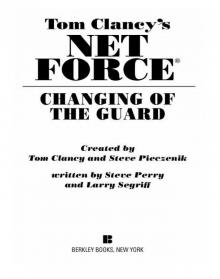 Changing of the Guard
Changing of the Guard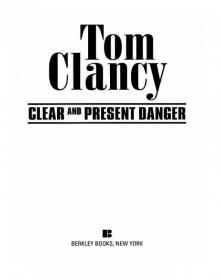 Clear and Present Danger
Clear and Present Danger Hounds of Rome
Hounds of Rome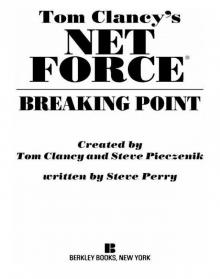 Breaking Point
Breaking Point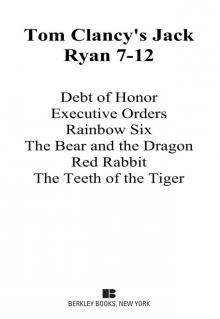 Tom Clancy's Jack Ryan Books 7-12
Tom Clancy's Jack Ryan Books 7-12 Full Force and Effect
Full Force and Effect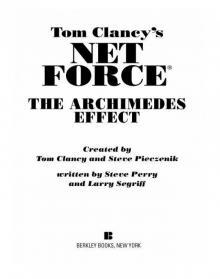 The Archimedes Effect
The Archimedes Effect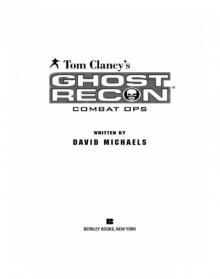 Combat Ops
Combat Ops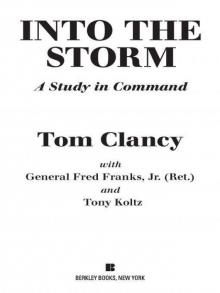 Into the Storm: On the Ground in Iraq
Into the Storm: On the Ground in Iraq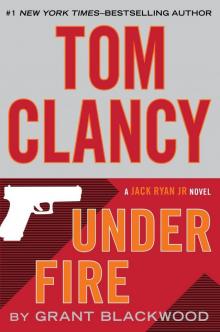 Under Fire
Under Fire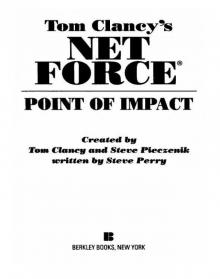 Point of Impact
Point of Impact Red Rabbit
Red Rabbit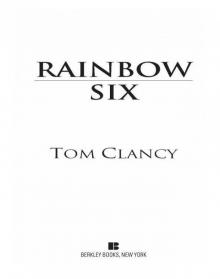 Rainbow Six
Rainbow Six The Hunt for Red October
The Hunt for Red October The Teeth of the Tiger
The Teeth of the Tiger Conviction (2009)
Conviction (2009)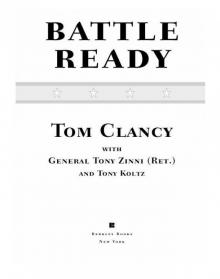 Battle Ready
Battle Ready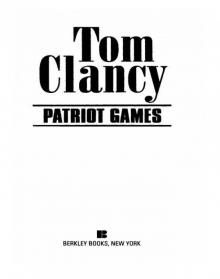 Patriot Games
Patriot Games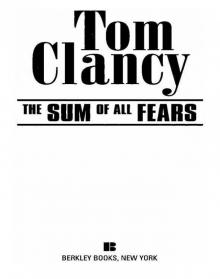 The Sum of All Fears
The Sum of All Fears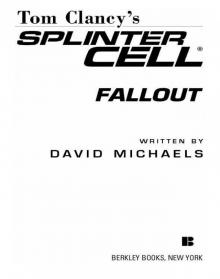 Fallout (2007)
Fallout (2007) Red Storm Rising
Red Storm Rising The Cardinal of the Kremlin
The Cardinal of the Kremlin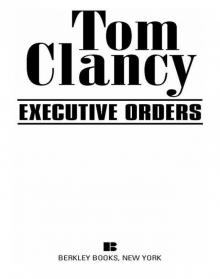 Executive Orders
Executive Orders Lincoln, the unknown
Lincoln, the unknown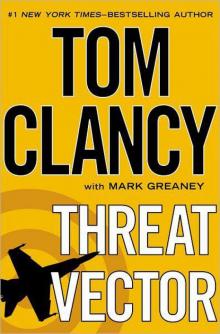 Threat Vector
Threat Vector The Hunted
The Hunted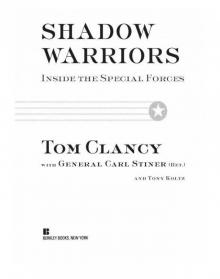 Shadow Warriors: Inside the Special Forces
Shadow Warriors: Inside the Special Forces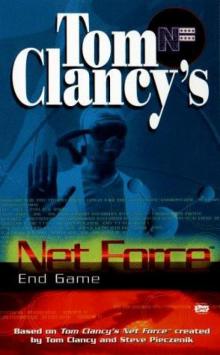 End Game
End Game Special Forces: A Guided Tour of U.S. Army Special Forces
Special Forces: A Guided Tour of U.S. Army Special Forces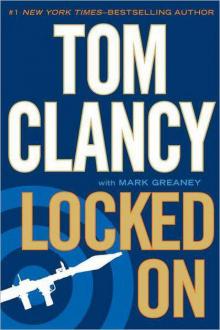 Locked On
Locked On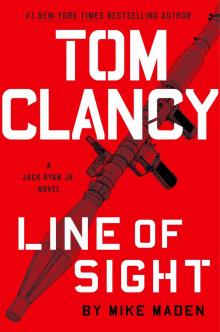 Line of Sight
Line of Sight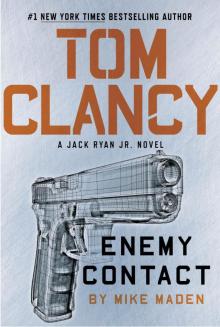 Tom Clancy Enemy Contact - Mike Maden
Tom Clancy Enemy Contact - Mike Maden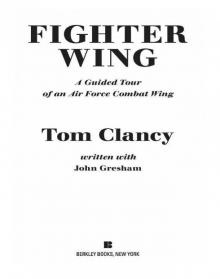 Fighter Wing: A Guided Tour of an Air Force Combat Wing
Fighter Wing: A Guided Tour of an Air Force Combat Wing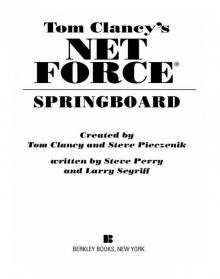 Springboard
Springboard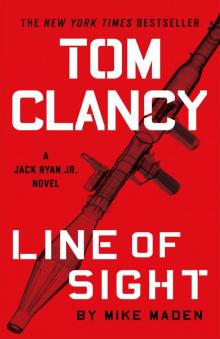 Line of Sight - Mike Maden
Line of Sight - Mike Maden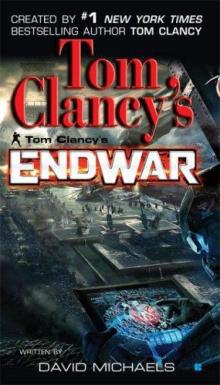 EndWar
EndWar Dead or Alive
Dead or Alive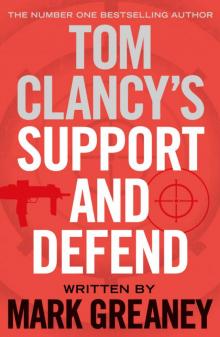 Tom Clancy Support and Defend
Tom Clancy Support and Defend Checkmate
Checkmate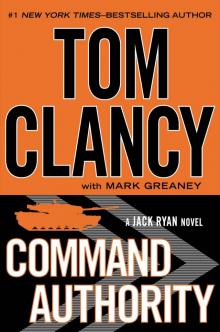 Command Authority
Command Authority Carrier: A Guided Tour of an Aircraft Carrier
Carrier: A Guided Tour of an Aircraft Carrier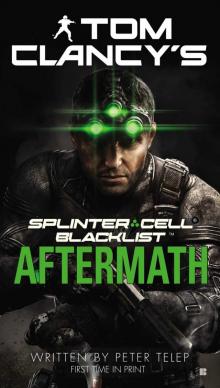 Blacklist Aftermath
Blacklist Aftermath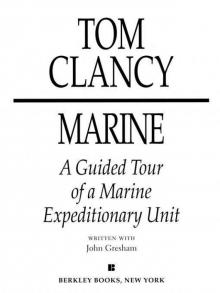 Marine: A Guided Tour of a Marine Expeditionary Unit
Marine: A Guided Tour of a Marine Expeditionary Unit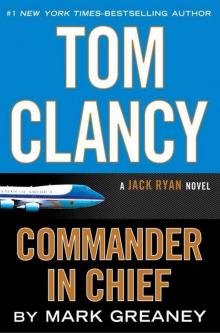 Commander-In-Chief
Commander-In-Chief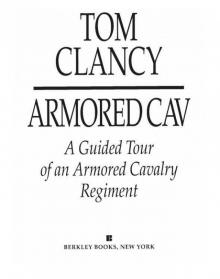 Armored Cav: A Guided Tour of an Armored Cavalry Regiment
Armored Cav: A Guided Tour of an Armored Cavalry Regiment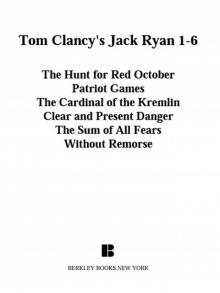 Tom Clancy's Jack Ryan Books 1-6
Tom Clancy's Jack Ryan Books 1-6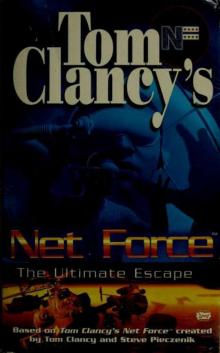 The Ultimate Escape
The Ultimate Escape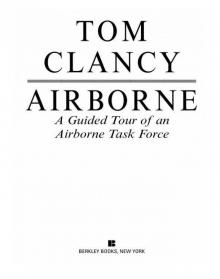 Airborne: A Guided Tour of an Airborne Task Force
Airborne: A Guided Tour of an Airborne Task Force Debt of Honor
Debt of Honor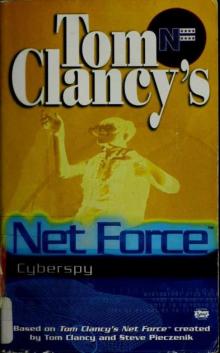 Cyberspy
Cyberspy Point of Contact
Point of Contact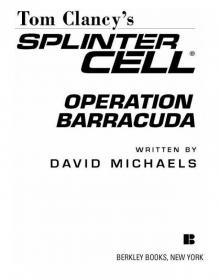 Operation Barracuda (2005)
Operation Barracuda (2005)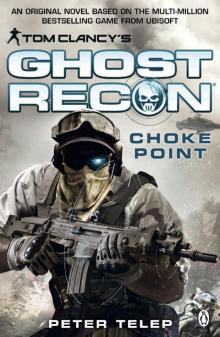 Choke Point
Choke Point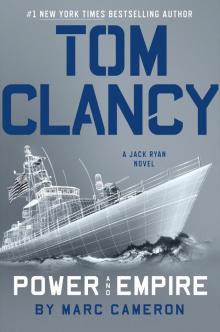 Power and Empire
Power and Empire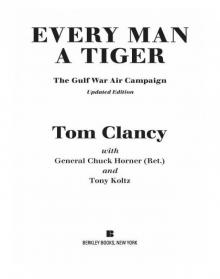 Every Man a Tiger: The Gulf War Air Campaign
Every Man a Tiger: The Gulf War Air Campaign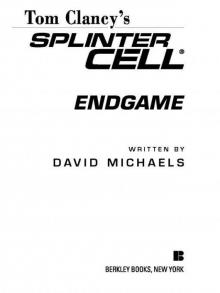 Endgame (1998)
Endgame (1998)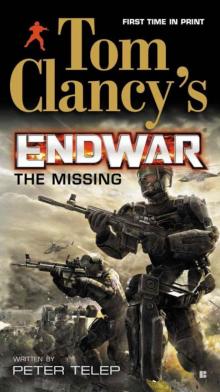 EndWar: The Missing
EndWar: The Missing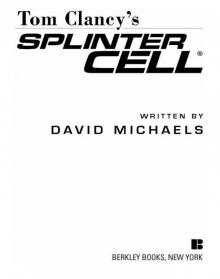 Splinter Cell (2004)
Splinter Cell (2004) The Great Race
The Great Race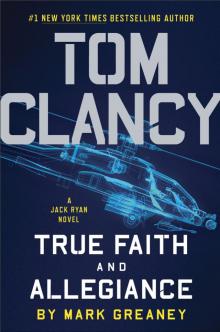 True Faith and Allegiance
True Faith and Allegiance Deathworld
Deathworld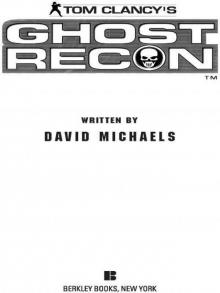 Ghost Recon (2008)
Ghost Recon (2008) Duel Identity
Duel Identity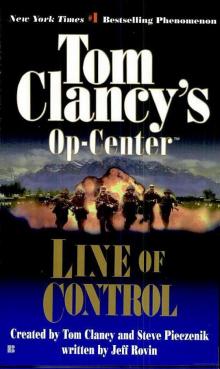 Line of Control o-8
Line of Control o-8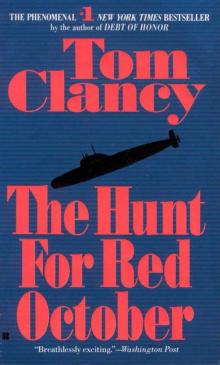 The Hunt for Red October jr-3
The Hunt for Red October jr-3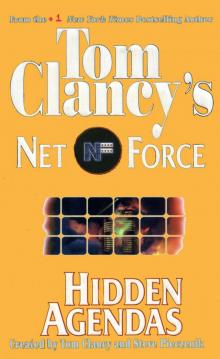 Hidden Agendas nf-2
Hidden Agendas nf-2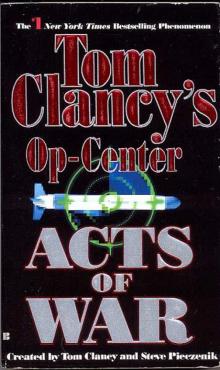 Acts of War oc-4
Acts of War oc-4 Ruthless.Com pp-2
Ruthless.Com pp-2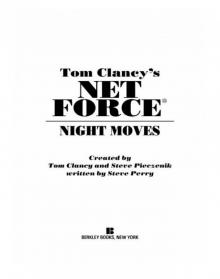 Night Moves
Night Moves The Hounds of Rome - Mystery of a Fugitive Priest
The Hounds of Rome - Mystery of a Fugitive Priest Into the Storm: On the Ground in Iraq sic-1
Into the Storm: On the Ground in Iraq sic-1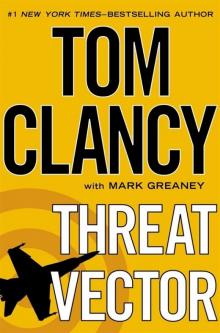 Threat Vector jrj-4
Threat Vector jrj-4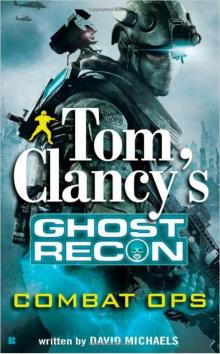 Combat Ops gr-2
Combat Ops gr-2 Virtual Vandals nfe-1
Virtual Vandals nfe-1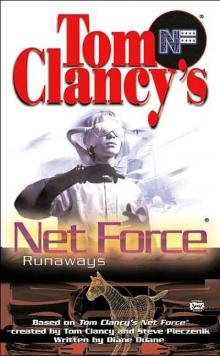 Runaways nfe-16
Runaways nfe-16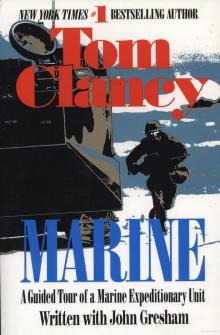 Marine: A Guided Tour of a Marine Expeditionary Unit tcml-4
Marine: A Guided Tour of a Marine Expeditionary Unit tcml-4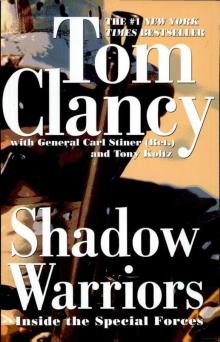 Shadow Warriors: Inside the Special Forces sic-3
Shadow Warriors: Inside the Special Forces sic-3 Jack Ryan Books 1-6
Jack Ryan Books 1-6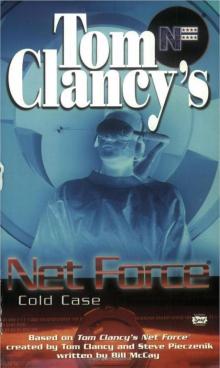 Cold Case nfe-15
Cold Case nfe-15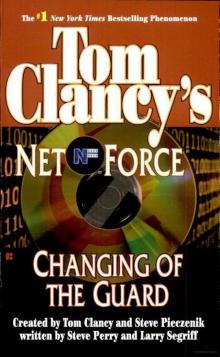 Changing of the Guard nf-8
Changing of the Guard nf-8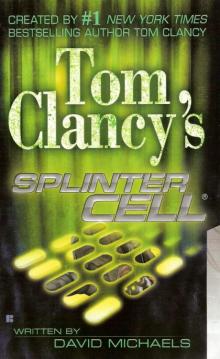 Splinter Cell sc-1
Splinter Cell sc-1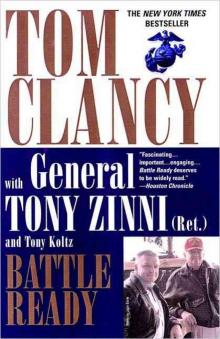 Battle Ready sic-4
Battle Ready sic-4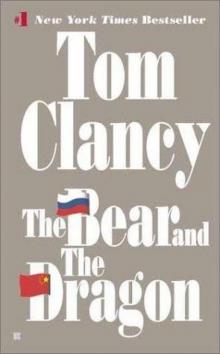 The Bear and the Dragon jrao-11
The Bear and the Dragon jrao-11 Fighter Wing: A Guided Tour of an Air Force Combat Wing tcml-3
Fighter Wing: A Guided Tour of an Air Force Combat Wing tcml-3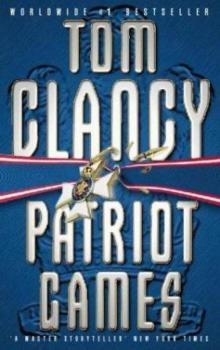 Patriot Games jr-1
Patriot Games jr-1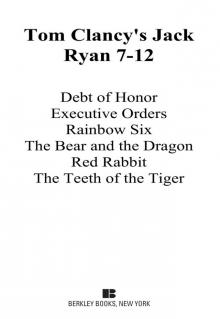 Jack Ryan Books 7-12
Jack Ryan Books 7-12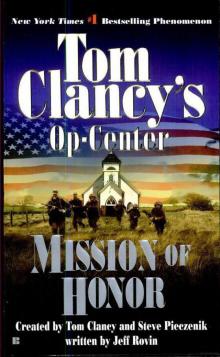 Mission of Honor o-9
Mission of Honor o-9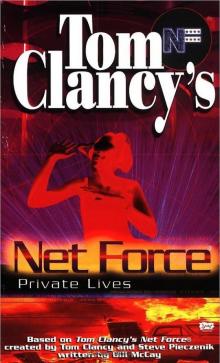 Private Lives nfe-9
Private Lives nfe-9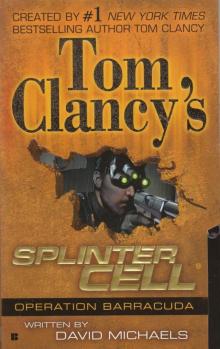 Operation Barracuda sc-2
Operation Barracuda sc-2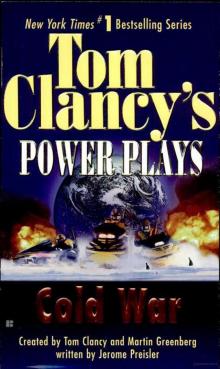 Cold War pp-5
Cold War pp-5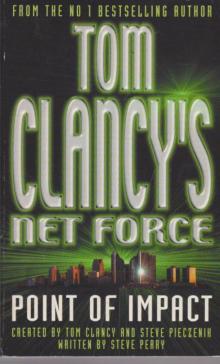 Point of Impact nf-5
Point of Impact nf-5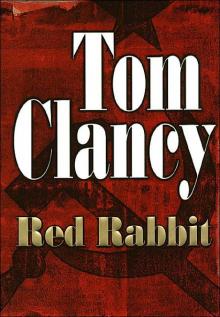 Red Rabbit jr-9
Red Rabbit jr-9 The Deadliest Game nfe-2
The Deadliest Game nfe-2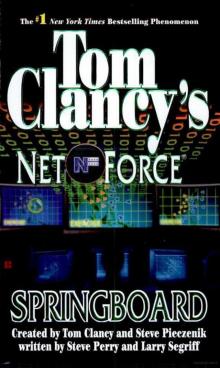 Springboard nf-9
Springboard nf-9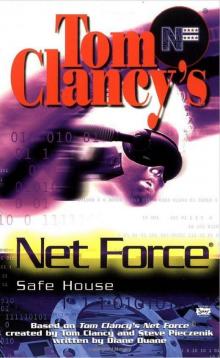 Safe House nfe-10
Safe House nfe-10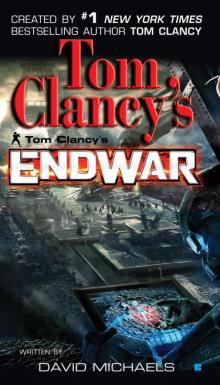 EndWar e-1
EndWar e-1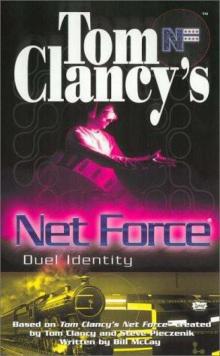 Duel Identity nfe-12
Duel Identity nfe-12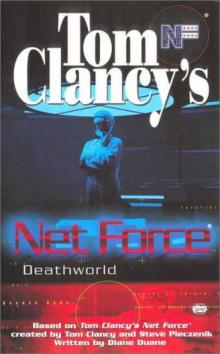 Deathworld nfe-13
Deathworld nfe-13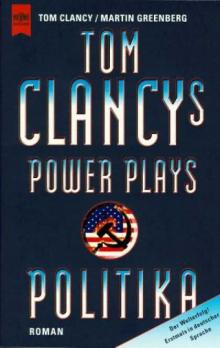 Politika pp-1
Politika pp-1 Rainbow Six jr-9
Rainbow Six jr-9 Tom Clancy's Power Plays 1 - 4
Tom Clancy's Power Plays 1 - 4 Endgame sc-6
Endgame sc-6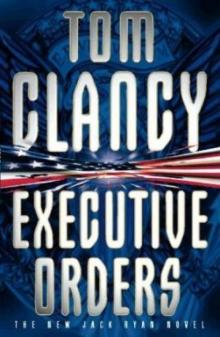 Executive Orders jr-7
Executive Orders jr-7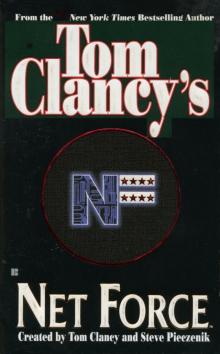 Net Force nf-1
Net Force nf-1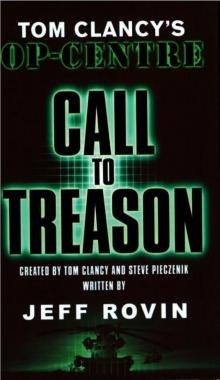 Call to Treason o-11
Call to Treason o-11 Locked On jrj-3
Locked On jrj-3 Against All Enemies
Against All Enemies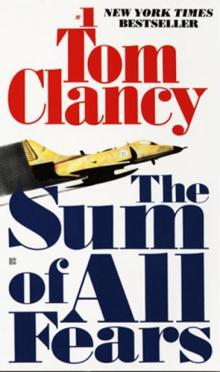 The Sum of All Fears jr-7
The Sum of All Fears jr-7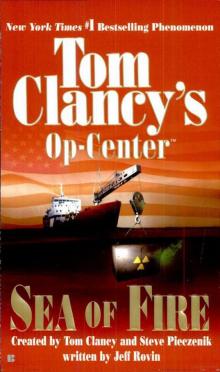 Sea of Fire o-10
Sea of Fire o-10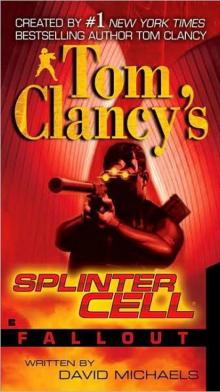 Fallout sc-4
Fallout sc-4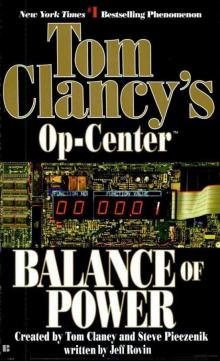 Balance of Power o-5
Balance of Power o-5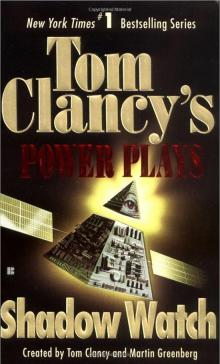 Shadow Watch pp-3
Shadow Watch pp-3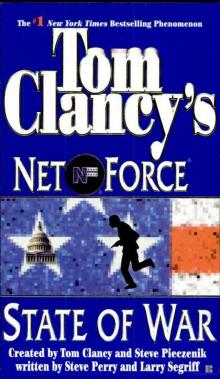 State of War nf-7
State of War nf-7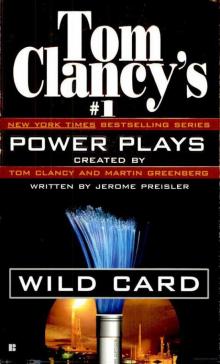 Wild Card pp-8
Wild Card pp-8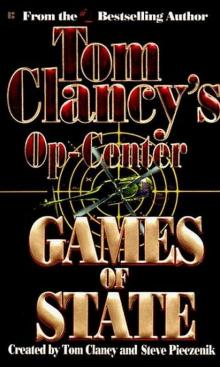 Games of State o-3
Games of State o-3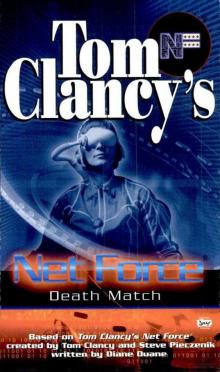 Death Match nfe-18
Death Match nfe-18 Against All Enemies mm-1
Against All Enemies mm-1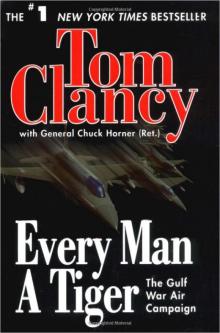 Every Man a Tiger: The Gulf War Air Campaign sic-2
Every Man a Tiger: The Gulf War Air Campaign sic-2 Cybernation nf-6
Cybernation nf-6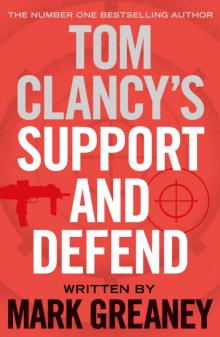 Support and Defend
Support and Defend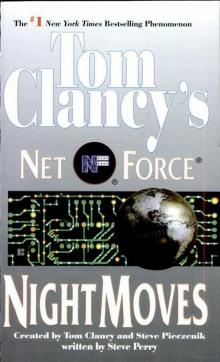 Night Moves nf-3
Night Moves nf-3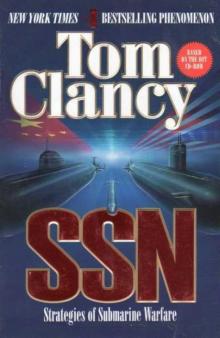 SSN
SSN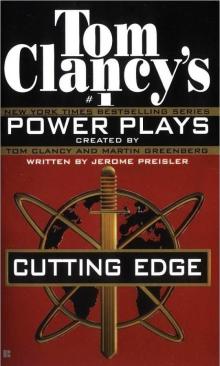 Cutting Edge pp-6
Cutting Edge pp-6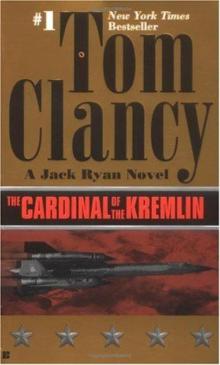 The Cardinal of the Kremlin jrao-5
The Cardinal of the Kremlin jrao-5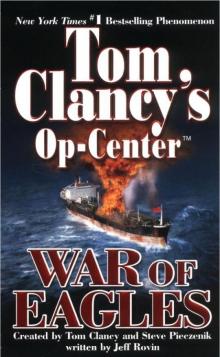 War of Eagles o-12
War of Eagles o-12 Op-Center o-1
Op-Center o-1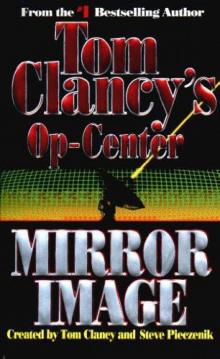 Mirror Image o-2
Mirror Image o-2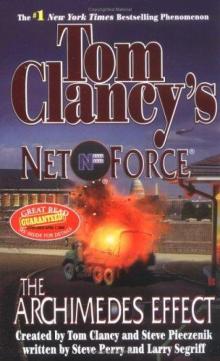 The Archimedes Effect nf-10
The Archimedes Effect nf-10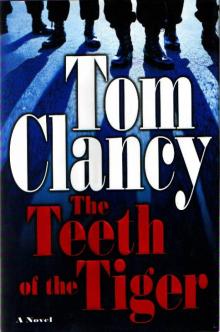 Teeth of the Tiger jrj-1
Teeth of the Tiger jrj-1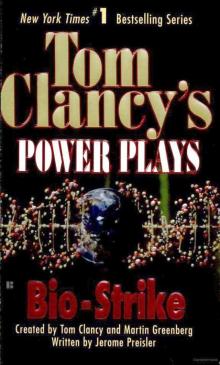 Bio-Strike pp-4
Bio-Strike pp-4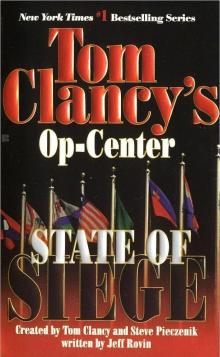 State of Siege o-6
State of Siege o-6 Debt of Honor jr-6
Debt of Honor jr-6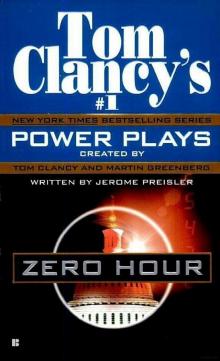 Zero Hour pp-7
Zero Hour pp-7 Ghost Recon gr-1
Ghost Recon gr-1 Command Authority jr-10
Command Authority jr-10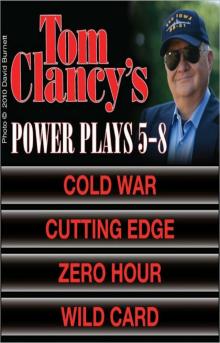 Tom Clancy's Power Plays 5 - 8
Tom Clancy's Power Plays 5 - 8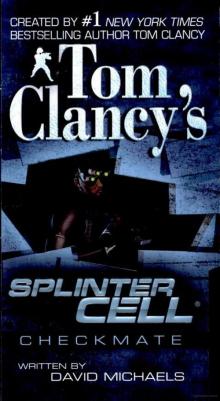 Checkmate sc-3
Checkmate sc-3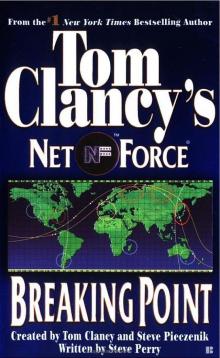 Breaking Point nf-4
Breaking Point nf-4 Gameprey nfe-11
Gameprey nfe-11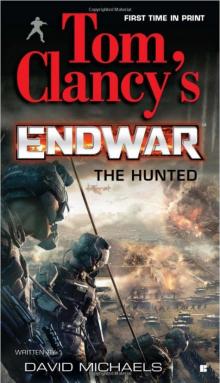 The Hunted e-2
The Hunted e-2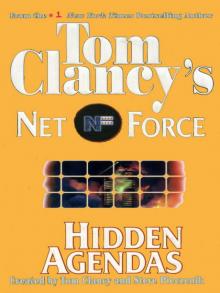 Hidden Agendas
Hidden Agendas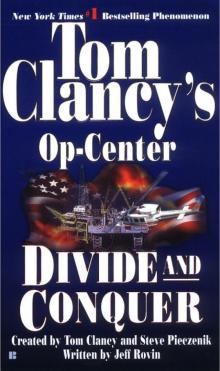 Divide and Conquer o-7
Divide and Conquer o-7